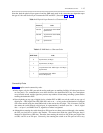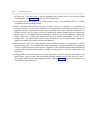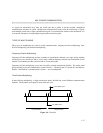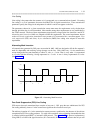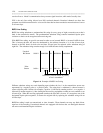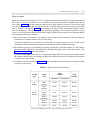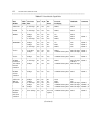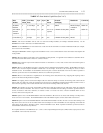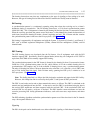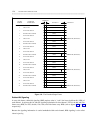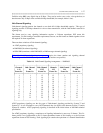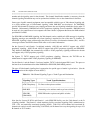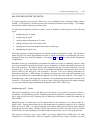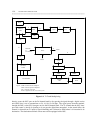MULTIPLEXED COMMUNICATION 1-23
_ ______________________________________________________________________________________
_ ______________________________________________________________________________________
_ ______________________________________________________________________________________
TABLE 1-7: Data-Module Capabilities (Part 2 of 2)
_ _____________________________________________________________________________________________________
Data DMI User Data Sync Async Bit Protocol Handshake Comments
Module Mode Rate Invert Packaging
_ _____________________________________________________________________________________________________
_ _____________________________________________________________________________________________________
PC/ISDN 2 to 19.2 kbps No Yes Yes HDLC Mode 3/2 adapt NOTE 10
Platform or Mode 2
with ASCII 3 64 or 56 kbps Yes No Yes or No LAPD/X.25 data phase Mode 3 NOTE 10
terminal (option)
emulation
_ _____________________________________________________________________________________________________
Constellation 3 64 kbps Yes No Yes LAPD/X.25 data phase Mode 3
_ _____________________________________________________________________________________________________
NOTE 1: The mode-2 handshake will not work over other than 64-kbps facilities (for example, robbed-bit facilities). Use the
MPDM/M1* for mode-1 calls made over robbed-bit facilities.
NOTE 2: Use the MPDM/M1* for mode-0 and mode-1 calls when the far-end DCE is not another AT&T data module (for example,
does not do a mode-2 handshake).
Although the MPDM/M1* will also suppress the handshake in mode 2, it is recommended this not be done because rate adaption will
not be possible.
NOTE 3: Mode 3/2 adaptive means that a mode-3 handshake is attempted first. An algorithm is then followed to determine the far-
end’s data mode and either switch to mode 2 or continue in mode 3.
NOTE 4: Mode-3 data can only be circuit-switched in Generic 2.1 and Generic 1.1. Also, mode 3 on the 3270 A and 3270 T requires a
3270 C on the far-end.
NOTE 5: Mode 2 on the PC/PBX connection is supported under the ASCII terminal emulation package. The PC/PBX connection in
mode 2 uses a mode-3/2 adaptive handshake if the bit rate is set at 64 kbps. If the rate is set at 19.2 kbps or slower, a mode-2
handshake is used. 3270 emulation on the PC/PBX connection requires a 3270 C data module on the far-end. Mode-3 operation is
defined as synchronous when in 3270 emulation; otherwise, it is defined as asynchronous.
NOTE 6: Mode 2 on the 7500 series is implemented in the incoming (to the 7500) direction only. Outgoing calls requiring mode-2
speeds use the mode-3/2 adaptive bearer capability.
NOTE 7: On outgoing mode-3 and mode-3/2 adaptive calls, the 7500 series always inverts bits. On incoming mode-3 and mode-3/2
adaptive calls, the 7500 series checks the restriction bit in the low-layer compatibility information element (IE) and either inverts or
does not invert, depending on the contents of the IE. This is not done for incoming mode-0 calls, however.
NOTE 8: The algorithm for the mode-3/2 handshake is different for DCP data modules and the 7500. When called, the 7500 data
module starts a mode-3 handshake. If it receives a mode-3 or mode-2 handshake from the calling end within a specified number of
seconds, it switches to that mode. Otherwise, it switches to mode 2. If it does not receive a mode-2 handshake within 15 more
seconds, it times out and drops the call.
NOTE 9: Options exist on the PC/ISDN Platform with 3270 emulation to allow the user to choose either 56 kbps or 64 kbps and to
choose to invert or not invert bits. The PC ISDN Platform with 3270 emulation requires a 3270 C data module on the far-end.
NOTE 10: Options exist on the PC/ISDN Platform with ASCII terminal emulation to allow the user to choose either 56 kbps or 64
kbps and to choose to invert or not invert bits. Either mode-3/2 adaptive or mode-2 handshakes are used depending on the baud-rate
option setting. If the setting is 19.2 kbps or slower, a mode-2 handshake is used. Mode-3 operation is defined as synchronous when in
3270 emulation; otherwise it is asynchronous.
For complete definitions of the DMI modes 0, 1, 2, and 3, refer to Digital Multiplexed Interface (DMI) Technical Specification, select
code 500-029. Ask for the most recent issue.



